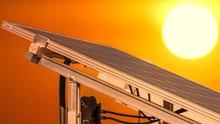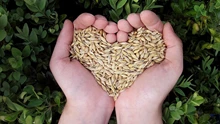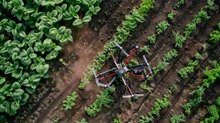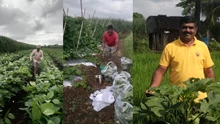
According to a new report from the United Nations Environment Programme, the glacier-capped mountains of South Asia, which provide drinking water to billions of people, are warming at an alarming rate (UNEP). According to a Scientific Assessment of the Third Pole, the region, known as the Third Pole because of the massive amount of ice it contains, has been warming at nearly twice the global mean. While the area is currently becoming wetter, experts fear that the retreat of glaciers will result in water shortages across South and East Asia in the coming decades.
"We're seeing that some rivers have already passed their peak water, while others will in the coming decades," said Deliang Chen, a professor at the University of Gothenburg and one of the report's authors. "There is concern about water scarcity in the long run."
The Third Pole stretches from Afghanistan in the west to China in the east, covering over 5 million square kilometres. The Pamir-Hindu Kush, Himalayan, Hengduan, Tienshan, and Qilian mountain ranges are all part of it.
The Third Pole's glaciers cover 100,000 square kilometres and feed ten river systems and 12,000 lakes. The Third Pole is named after the fact that it holds the most frozen water after the North and South poles. It's also known as the 'Asian Water Tower,' because it serves over 2 billion people, or 30% of the world's population, with water.
According to the new report, which was produced by UNEP in collaboration with Third Pole Environment, Pan-TPE, and the UNEP-International Ecosystem Management Partnership, permafrost is thawing, the growing season is lengthening, and lake levels are rising at a rate of 0.14m per year in the region. Seasons are becoming less predictable across the region, and extreme events such as flooding, drought, and ice collapses are becoming more common.
Deliang Chen, a professor at the University of Gothenburg, said, "The disaster risk is increasing." "The differences between years and seasons are becoming more pronounced."
Agriculture is the primary source of income for the majority of the population of the Third Pole. According to the report, increased variability, flooding, drought, and temperatures all put their livelihoods at risk.
"It is very clear that human-caused global warming is causing increased climate warming" at the Third Pole, according to Chen. The new UNEP study comes just weeks after the landmark Intergovernmental Panel on Climate Change (IPCC) report, which concluded that the world is running out of time to avoid a global climate catastrophe. It stated that humanity must reduce planet-warming greenhouse gas emissions by 50% by 2030 in order to keep global warming below 1.5°C, which is considered a red line for the planet.
The Third Pole report emphasizes the dangers that human-caused climate change poses to the region's native species. It is home to over 169 animals on the Red List of Threatened Species of the International Union for Conservation of Nature (IUCN). 16 of the animals are classified as critically endangered, 66 as endangered, and 87 as vulnerable. Snow leopards, giant pandas, Tibetan antelopes, and black-necked cranes are among them.
(Source: UNEP)












